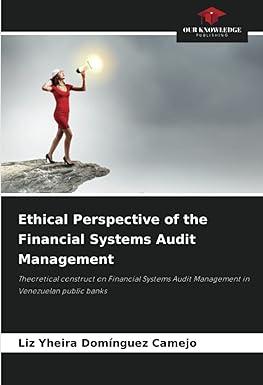Question
Assume you live in an M&M world (i.e. all the assumptions of the Modigliani and Miller (M&M) model are true, including the absence of taxes.)
Assume you live in an M&M world (i.e. all the assumptions of the Modigliani and Miller (M&M) model are true, including the absence of taxes.) Currently, it is date 0. You own the equity of a company that, starting at date 1, will either (a) generate 300 with certainty every year forever or (b) generate 100 with certainty every year forever. There is a 50% probability that (a) will occur, and a 50% probability that (b) will occur. Today, that is, we dont know the future cash flows, but we will know them with certainty next year.Assume there is no systematic risk associated with these cash flows and that the risk-free rate is 10% (hint: Ask yourself how these assumptions affect your calculation of the return on equity using the CAPM model). There are 1000 shares outstanding.
(a) Suppose the company is 100% equity financed. What is the value of the companys equity? What is the share price?
(b) Suppose now that this company issues perpetual bonds with a face value of $1,500 and a 15% coupon. By perpetual bonds, I mean bonds that pay the 15% coupon forever and never repay the face value. Under the terms of the bond indenture (i.e., the contract governing the bond issuance), if the company ever fails to make a coupon payment, the bondholders will seize control of the company, cancel the shares held by the equityholders, and keep the companys cash flows during that period and in all future years (the bondholders, in other words, become the new equityholders). When the company issues the debt, it receives $1,625. Assume the bonds continue to trade at that value ($1,625). That is, assume that the market value of the debt is $1,625 (i.e., use this as your value of D instead of the book value of debt). What is the new value of the equity? What is the new value of the firm?
(c) Suppose that, immediately after issuing the debt, the company uses the proceeds ($1,625) to repurchase shares (or to pay dividends the analysis would be the same). The repurchase occurs on the same day that the bonds are issued. Bonds continue to trade at $1,625 after the repurchase. (Imagine that the bonds are issued in the morning and the shares are repurchased at mid-day on the same day. When this set of transactions is complete, date 1 is still one period away and you can discount future cash flows as if they occur one period from now.) After the share repurchase, what is the value of equity? What is the value of the firm?
(d) What is the promised yield on the debt between date 0 and date 1? This calculation assumes that the firm does not default at date 1.
(e) what is the expected rate of return on the debt between date 0 and date 1? (Here you do account for the risk of default. The expected rate of return is equal to the expected cash flow at date 1, divided by the market value of the debt at date 0).
(f) What is the rate of return on equity after the share repurchase?
(g) Is the firms WACC greater or less than the coupon rate on the debt? Does that make sense?
Step by Step Solution
There are 3 Steps involved in it
Step: 1

Get Instant Access to Expert-Tailored Solutions
See step-by-step solutions with expert insights and AI powered tools for academic success
Step: 2

Step: 3

Ace Your Homework with AI
Get the answers you need in no time with our AI-driven, step-by-step assistance
Get Started


